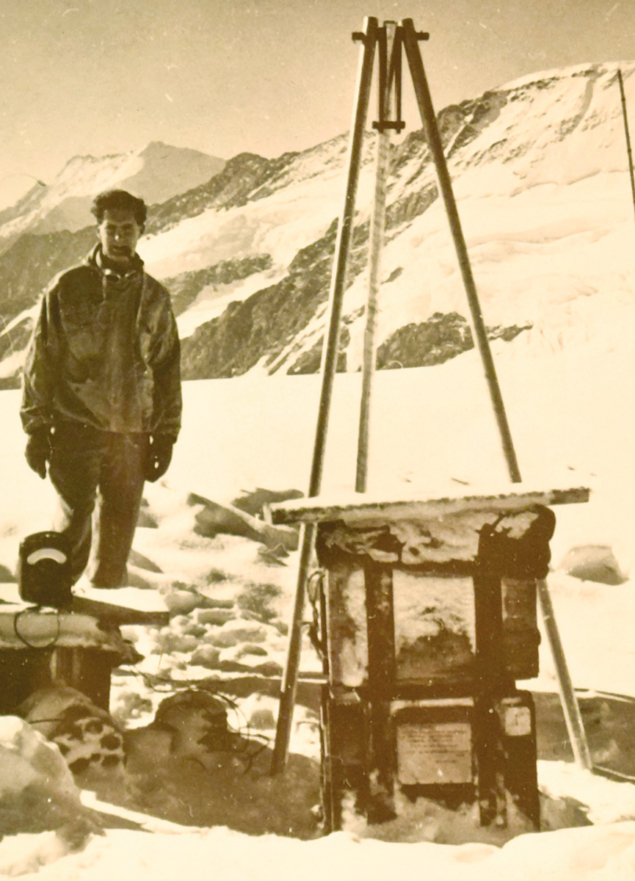
UK experimental particle physicist Don Perkins, who played a significant role in shaping the field from the 1940s onwards, passed away on 30 October at the age of 97.
After graduating from Imperial College, London, Perkins obtained a PhD under the supervision of George Paget Thomson, recipient of the 1937 Nobel Prize in Physics. As part of his thesis work, he took a photographic emulsion – a new medium for particle detection at the time – onto a Royal Air Force transport plane to record cosmic rays at altitude. This resulted in what was later recognised to be the first observation of the pion, published in Nature in 1947.
In 1951 Perkins joined another Nobel laureate, Cecil Powell, in Bristol where, working with Peter Fowler, he discovered some of the decay properties of pions. This involved touring some of the world’s mountain tops with photographic emulsions, as well as sending them into the stratosphere on balloons. As a result of their studies, Perkins and Fowler were the first to suggest that irradiation with negatively charged pions might be used to treat cancer. In 1965 Perkins moved to the University of Oxford where, under the overall leadership of Denys Wilkinson, he established a world-leading particle-physics group. One year later he was elected a Fellow of the Royal Society. In 1991 he received the Royal Medal of the Royal Society, among many honours that would crown his long career.
As modern electronic counters and bubble chambers began to replace emulsion techniques, Perkins worked at CERN, where in 1973 he contributed to the seminal discovery of neutral currents with the Gargamelle bubble chamber. Thirty years later, in characteristic style and peppered with anecdotes, Perkins recounted the story of the neutral-current discovery in this magazine (CERN Courier Commemorative Issue Willibald Jentschke June 2003 p15).
In the late 1960s, when the scattering of electrons off protons in experiments at SLAC had established that the proton is not elementary, Perkins realised that neutrino scattering could give complementary information that helped prove the existence of fractionally charged quarks. He was also an early supporter of quantum chromodynamics, which explained why quarks are confined inside hadrons.
As the 1970s progressed, Perkins became increasingly interested in proton decay, and was a leading advocate of the Soudan-II experiment in the US. Although Soudan-II never saw evidence of proton decay, the experiment made important contributions to advancing the field of neutrino physics.
Over his long career, Perkins’ brilliance benefitted generations of physics students, many of whom were drawn to particle physics through his textbook Introduction to High Energy Physics, first published in 1972 based on his undergraduate lectures and now in its fourth edition. Besides his experimental and theoretical contributions, Perkins was active in the governance of particle physics, having chaired both the nuclear physics board of the UK’s former Science and Engineering Research Council and CERN’s Scientific Policy Committee. He was a member of many international advisory committees and strategy meetings, including one in 1979 that led to the construction of the HERA electron–proton collider at DESY.
A charismatic and influential figure, his wisdom, delivered in a northern English accent and accompanied by his distinctive laugh, will be greatly missed by his many friends and colleagues.








